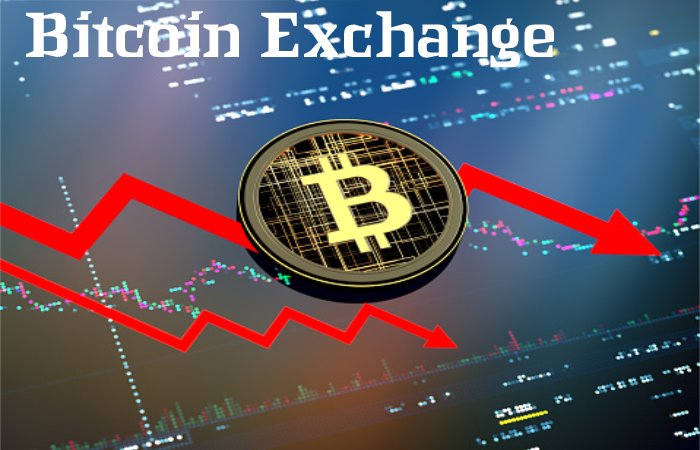Table of Contents
What Is Bitcoin?
It is a digital currency that is not subject to oversight by governments or banks. It relies on peer-to-peer transfers. Bitcoin has become one of the most popular virtual currencies globally since its inception on 3 January 2009. The creators of Bitcoin were a group of computer programmers who went with the anonym “Satoshi Nakamoto.” They launched the Bitcoin networks or peer-to-peer electronic payment system that would use the bitcoin (with lowercase b) cryptocurrency. Today, Bitcoin is the most successful digital currency with a high trade value.
Each bitcoin consists of 100,000,000 satoshis which are the minor units. This makes each bitcoin divisible up to eight decimal places. This, in turn, allows people to purchase fractions of with a bit of investment.
Over the years, the market value of Bitcoin has seen its highs and lows, and now it has made its place globally. It is the world’s first decentralized cryptocurrency and a digital asset that works on blockchain technology. The public-key cryptography technique allows users to sign, record, and make unique Bitcoin transactions.
Bitcoin does not exist in the human form. It is a virtual currency with value, saved on a secure digital wallet and easily shared between the sender and receiver. It does not require any intermediary banking platforms to facilitate the transactions. Moreover, everything is through the transparent distributed ledger technology known as the blockchain.
How Does Bitcoin Work?

Bitcoin users input the public-key information associated with their digital wallet to send and receive across the network. A small fee per contract serves as an incentive for the miners verifying the transactions. Whichever miner adds the transaction to the blockchain gets the price as a reward. The fee depends on a first-price auction system. In this scenario, the higher the cost attached to the bitcoin transaction, the more likely the miner will process that transaction first.
What Is Bitcoin Mining
Mining is a process in which mineworkers use the Application-Specific Integrated Circuit ASIC equipment, and it is specialized computer equipment that unlocks the next block in the blockchain.
How Unlocking Blockchain Works
The mining method requires miners to comply with the Proof-of-Work system as they use specific machines and spend time and energy to mine blocks. This systematic approach prevents malicious agents from disrupting or spamming the blockchain network.
Miners who succeed in unlocking the next block add a number to the transaction to the new partnership. Also, the miners receive the block reward.
A Quick History of Bitcoin Block Mining
Over time, bitcoin block rewards keep decreasing. For every 210,000 blocks, the block reward is halved. Halving is the main trigger for the “bull market” or the “Bull run.”
Halving reduces the number of bitcoins entering the blockchain. In 2021, miners received 6.25 bitcoins each time they would mine a new block. The next bitcoin halving is in 2024, and the bitcoin block reward will likely drop to 3.125 per block. Therefore, as the supply of new bitcoins gets smaller, the more competitive the markets will become. However, this is assuming the demand for continues to increase.
Bitcoin Mining Energy Consumption
Using resources to mine blocks comes at a price. There are reports of high electrical energy consumption each year due to mining. However, unlike other systems, Bitcoin is a complete financial system that measures and tracks energy consumption. It is necessary to mention that mining uses 1.29% of energy consumption from a single country, leading to widespread criticism.
In addition, there are initiatives underway (like the Mining Council and Crypto Climate Accord) to improve the bitcoin carbon footprint by urging miners to use renewable energy sources.
What is the Bull Run or Bull Market?
A bull run or bull marketing is a period in which numerous investors buy. During this time, demand is more significant than supply, confidence in the market is high, and prices rise.
The main factor that affects the BTC price is the relationship between demand and supply. As mentioned earlier, halving triggers a bull run because it reduces the collection even more. When halving takes place, mining is more expensive for miners while supply remains fixed at 21 million. Consequently, with every halving, the BTC price increases.
What Makes This Bull Run Different?
This bull cycle is very different from previous ones because institutions and investors can quickly obtain. This is because now there are more online trading platforms, one of which is Rain.
Rain makes it easier for users to safely store their cryptocurrencies in a secure wallet and buy and sell at the best prices. Another reason this bull cycle is different is because investors are driving the BTC demand by supporting this digital currency. Moreover, there is more awareness about the advantages and support for cryptocurrencies and blockchain technology today. These factors positively impact the demand for and other digital currencies in the market.
Previous Bull Runs
After the bitcoin halved in 2012, the price increased from $11 to $12, but a year after that, the price rose to $1,075.
After the bitcoin halving in 2016, the most remarkable bull run increased the bitcoin price from $576 to $650. A year later, there was a steady growth in the bull cycle, and by December 2017, the bitcoin price reached $17,000.
By 2018, there was low volatility, and had a steady growth into 2019; by June of that year, bitcoin price was $10,000.
Therefore, the future of prices is positive and predictable.
Bitcoin Price History

It has been a coarse ride for investors in the past thirteen years. Aside from the rises and drops in bitcoin price, fraudsters and scammers have added to the volatility of BTC price. There have been good times when prices had a massive increase, and Bitcoin price increases and decreases are what we call the “price bubble.”
2011
In 2011, the bitcoin price increased from $1 in April to $32 in June. However, due to the recession in crypto markets, by November 2011, the price dropped to $2.
2012
In 2012, there was an increase in Bitcoin price to $4.80 by May, and it continued to rise to $13.20 by August.
2013
2013 proved a pivotal year for BTC price with two price bubbles. That year, digital currency trading began at $13.40. BTC price increased to $220 by the beginning of April. As swiftly as it expanded, by mid of April, the price dropped to $70. However, by October, the trade was at $123.20. BTC price saw a spike in December, reaching $1,156.10, which ended too soon. Within three days, the price dropped to $760.
2015
These rapid price bubbles were a sign of a multiyear slump for BTC price. By the beginning of 2015, the b coin price on crypto trading platforms was $315.
2017
The beginning of 2017 witnessed the fifth price bubble when the bitcoin price was about $1,000. There was a two-month decline in BTC price, and by March, it was at $975.70. By December, the BTC price rose to $20,089. This helped bring into the spotlight – economists and governments noticed this digital currency. Soon, analysts debated BTC value in the trade market and tried to make BTC price forecasts.
2019
The Bitcoin price rose and fell for two consecutive years, as happened in the past. In June 2019, there was a resurgence in trading volume and BTC price when it surpassed $10,000. This event rekindled hopes in cryptocurrency traders for another rally. However, by December 2019, the BTC price dropped to $7,112.73.
2020
By 2020, the Bitcoin price witnessed a burst of activity due to the pandemic that affected the economy. Due to the pandemic and resultant government policies, the shutdown led investors to fear a bad global economy. This accelerated crypto trading and caused the value of to increase. By the end of 2020, the Bitcoin price was $18,353. 2020 saw a rise in BTC price by December at $24,000.
2021
In less than a month, the BTC price increased, and by January 2021, it was at $40,000. By April 2021, the BTC price was at its peak, valued at more than $64,000. By the summer of 2021, prices dropped by 50%, making BTC price $32,000. Autumn 2021 saw another bull run when prices spiked to $50,000, but this was short-lived, followed by drawdowns bringing the BTC price to $42,500.
Factors That Influenced Early Bitcoin Price & Trading
In the early years of Bitcoin, liquidity was thin, and very few people were investing in cryptocurrency markets. The situation led to wide price swings, and due to this, there were reports of a ban on cryptocurrency exchanges. The rise and fall of cryptocurrency exchanges influenced the bitcoin price.
Mainstream online retailers also played an essential part in the bitcoin price fluctuations. In 2014, the bitcoin price crossed $1000 when Overstock announced its intent to buy bitcoins and accept them.
As the b coin network grew, so did mining difficulty and the need to use more energy for the mining equipment.
A Quick Bitcoin Price Analysis & Forecast
Here are some essential clothes that will help you understand that it is a good time to invest in now. Let us analyze and make a rough forecast based on the above facts.
At What Price Did Bitcoin Start Trading?
It started trading in July 2010, starting from $0.0008 to $0.08 per coin.
How Much Was One Bitcoin Worth in 2009?
The b coin price was worth $0 in 2009, and early adopters traded it for free.
What is the Highest Price Bitcoin Has Reached?
On April 14, 2021, the Bitcoin price reached an all-time high of $64,863
What will One Bitcoin Be Worth in 2030?
Making accurate predictions is not possible. Nonetheless, one may say that the future value of bitcoin can be between $397,000 and $500,000 per coin by 2030.
How to Buy Bitcoin in GCC and Turkey
Buy bitcoin from a licensed exchange, one of which is Rain. Bh.
However rain is a leading and trusted cryptocurrency trading platform in the Middle East. It is a licensed Cryptocurrency platform and custodian of different cryptocurrencies, and it is a platform trusted by thousands of customers in over 50 countries.
What is a Bitcoin Exchange?

A bitcoin exchange is an online currency exchange or a digital marketplace that serves as a platforms and intermediary where cryptocurrency traders can buy and sell using different fiat currencies.
Here are some benefits of trading through exchanges:
- Decentralization and speedy transfers of currency
- 24/7 operational system
- Deflationary nature of the digital currency
- Transparency due to blockchain technology
- Secure interface – Keep your currency safe in a digital wallet
- Unlink bank transfers to prevent reversible transactions
What Can Bitcoin Be Exchanged For?
However bitcoin allows cryptocurrency users to exchange currency with each other without any trusted third party or a bank system.
Moreover it safe to keep on exchange?
Rain is a safe and reliable cryptocurrency exchange that accepts many different payment methods. You can store your or other cryptocurrencies that you trade with on Rain in your secure wallet.
Many prefer Rain as their best exchange in the Middle East because buying and selling cryptocurrencies is very easy and safe through this platform. You can also use the mobile app on the go, and Rain implements strict security protocols and offers transparent pricing. Through Rain, you can get the best bitcoin price in the market.
Moreover are all set to begin trading through Rain. If you need more information or assistance to get started, feel free to get in touch.

